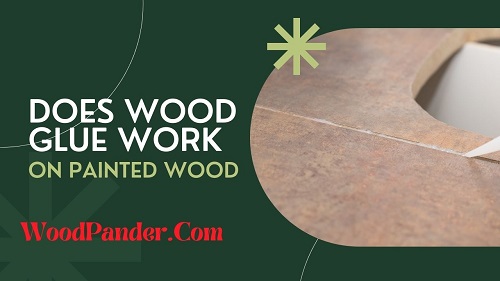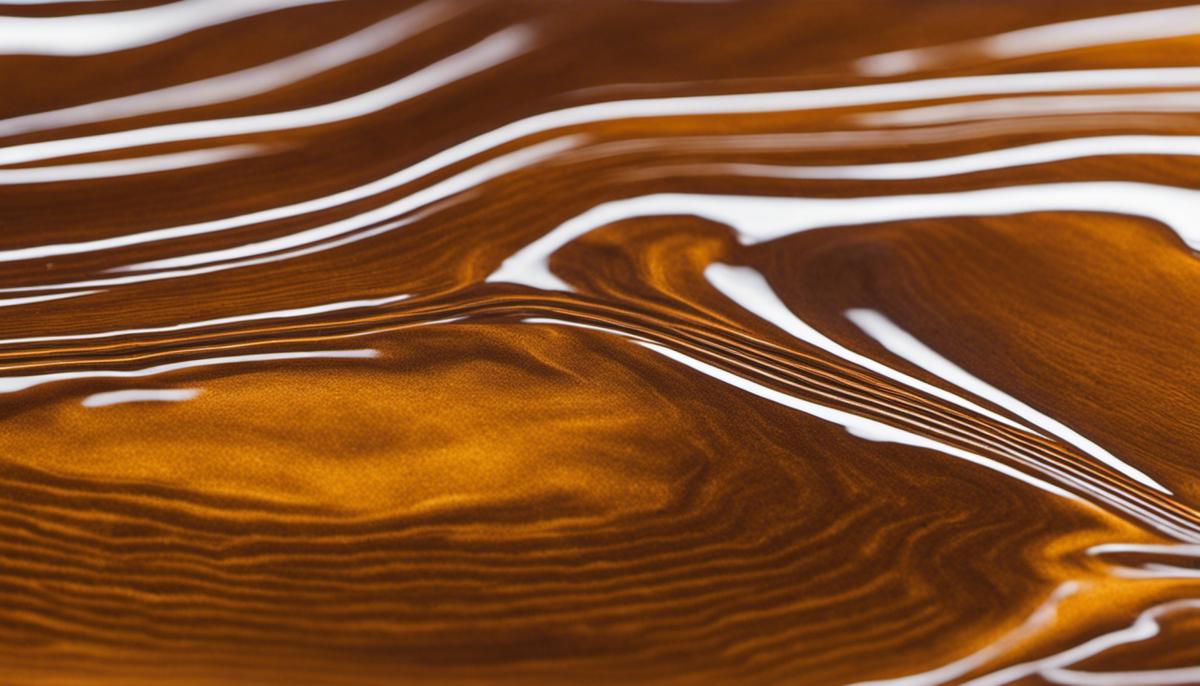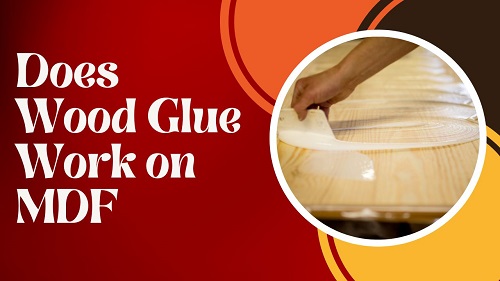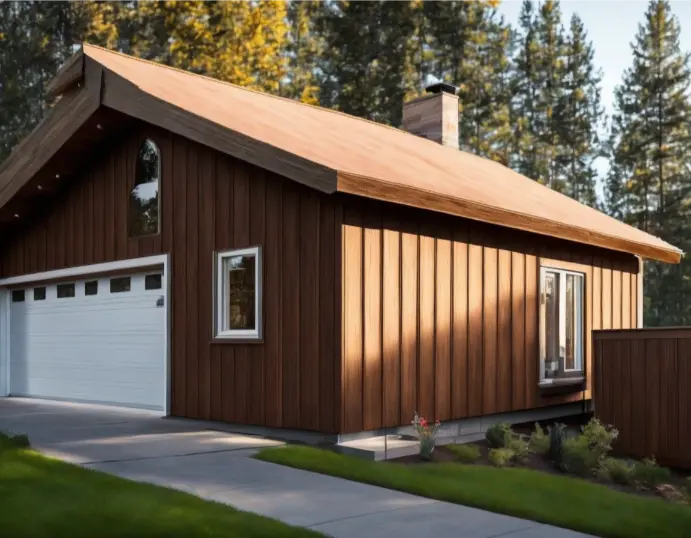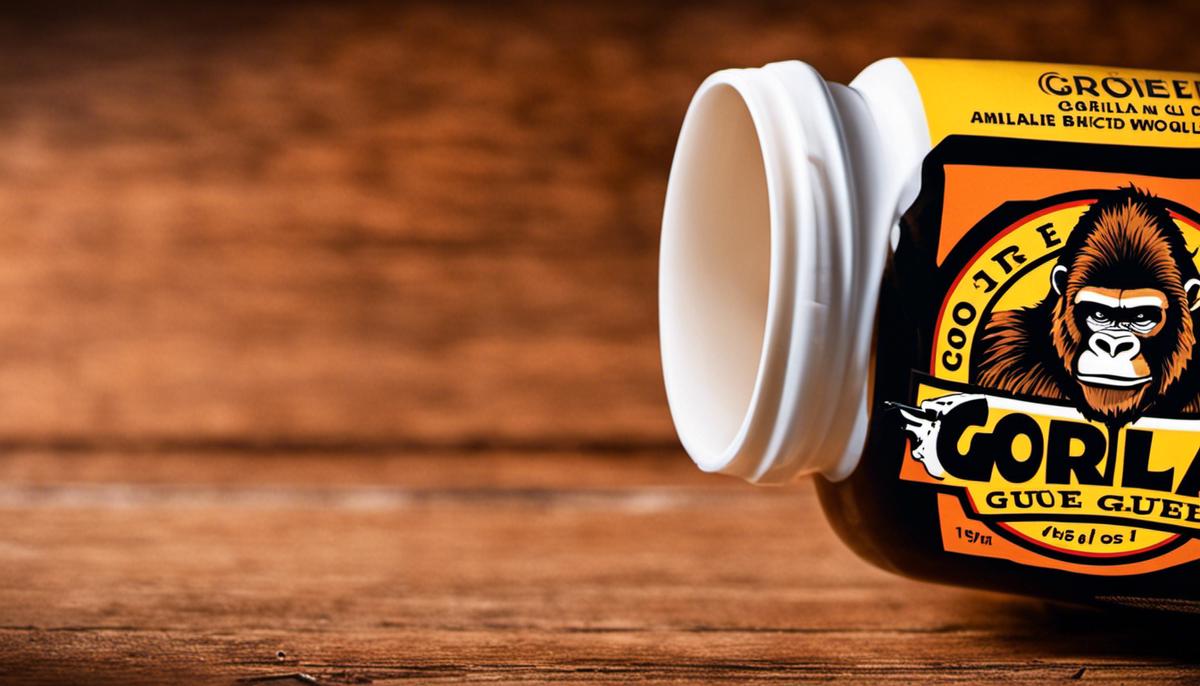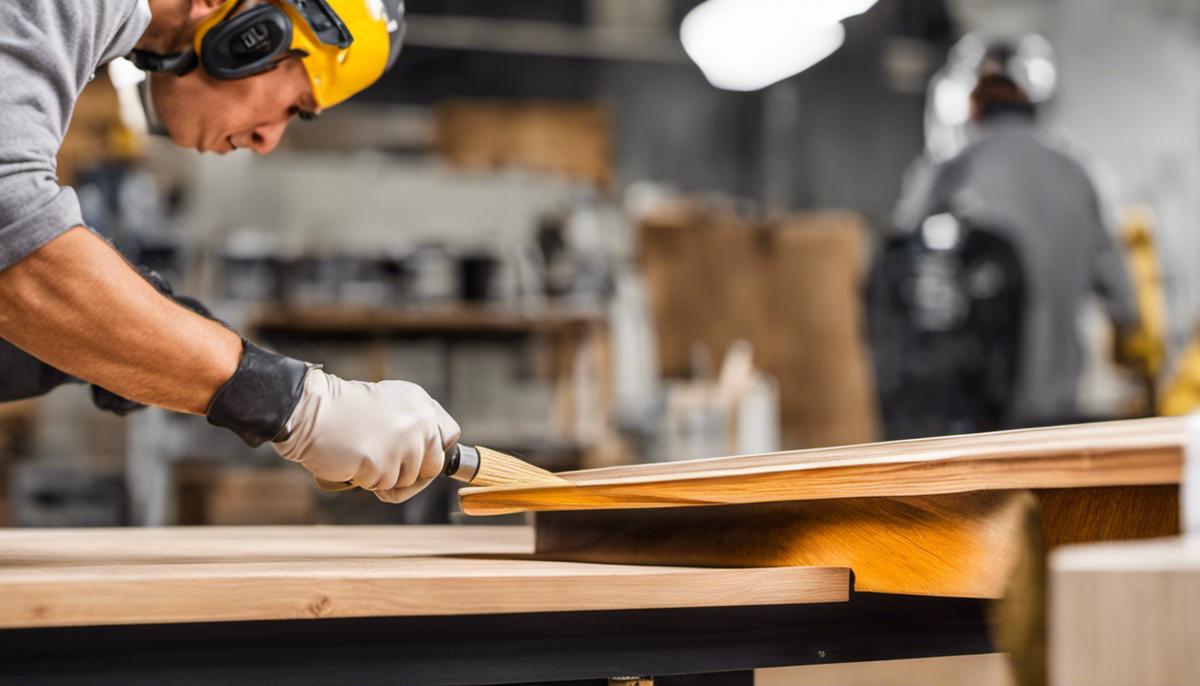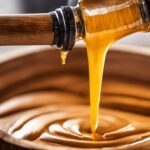Painting over a surface held together with wood glue can be a challenging task. The intricate process requires a solid understanding of the characteristics of wood glue, including its composition and its interaction with other substances, such as paint.
This foundation forms the basis that guides the application of painting techniques on surfaces with wood glue. Additionally, the effort to paint over wood glue demands a thorough grasp of several surface preparation techniques, aimed at achieving a flawless finish.
Adequate preparation involves sanding the surface to smooth the glued area, applying a primer, and utilizing other relevant methods.
With the insights provided in this essay, you will not only know the type of paint to use but also learn the correct painting techniques to prevent peeling and ensure an evenly distributed coat.
Can You Paint Over Wood Glue? Yes, you can paint over wood glue, but it’s important to ensure the glue is fully dried and the wood surface is properly prepared for optimal adhesion and finish.
Paint Over Wood Glue
| Aspect | Painting Over Wood Glue |
|---|---|
| Adhesion | Good adhesion if properly applied and dried. |
| Surface Preparation | Sanding may be required for a smooth finish. |
| Primer | Recommended for better paint adherence. |
| Paint Types | Most paints, including latex and acrylic, are suitable. |
| Drying Time | Allow ample time for the glue to fully cure (typically 24 hours). |
| Durability | Long-lasting if the glue bond is strong. |
| Finish | Achieves a smooth finish when done correctly. |
| Maintenance | Regular maintenance may be required, depending on the environment. |
One of our articles –Does Wood Glue Bond with Melamine?
Understanding Wood Glue Components
| Wood Glue Type | Main Components | Drying Time | Strength | Waterproof | Best Use |
|---|---|---|---|---|---|
| PVA (White Glue) | Polyvinyl Acetate | 15-30 minutes | Good | No | Indoor Projects |
| Aliphatic Resin | Aliphatic Resin | 20-30 minutes | Excellent | No | General Carpentry |
| Polyurethane | Polyurethane Polymer | 30-60 minutes | Excellent | Yes | Outdoor Projects |
| Epoxy | Epoxy Resin + Hardener | 5-10 minutes | Exceptional | Yes | High-Stress Joints |
One of our articles –Does Gorilla Wood Glue Work on Plastic?
Wood glue, more formally known as Polyvinyl Acetate (PVA), is an adhesive that comes in three primary types: PVA, Epoxy, and Polyurethane.
PVA is water-based, making it easy to clean, and it is non-toxic in nature.
Epoxy provides a stronger bond compared to PVA but comes with a complicated mixing process.
Polyurethane, on the other hand, works best in moist environments and can bond almost any surfaces together, but it is the most expensive
Interactions of Wood Glue with Other Substances
| Substance | Interaction with Wood Glue | Effect on Bonding |
|---|---|---|
| Wood | Strong bonding | Excellent adhesion |
| Metal | Limited adhesion | Weak bond |
| Plastic | Limited adhesion | Weak bond |
| Glass | Limited adhesion | Weak bond |
| Paper | Moderate adhesion | Decent bond |
| Fabric | Limited adhesion | Weak bond |
| Concrete | Limited adhesion | Weak bond |
| Ceramic | Limited adhesion | Weak bond |
| Rubber | Limited adhesion | Weak bond |
| PVC | Limited adhesion | Weak bond |
One of our articles –Does Wood Glue Work on MDF?
Wood glue can interact with other substances such as paint.
However, the extent of this interaction largely depends on the type of wood glue used and the specific type of paint.
This is crucial because the nature of these interactions can significantly impact the final outcome of your project.
In general, wood glue does not provide an ideal surface for paint adhesion.
This is primarily due to the differing chemical compositions of the two substances. Paint may struggle to bond effectively with the glue, potentially resulting in imperfect finishes when applied directly over it.
In fact, if the glue is not properly removed, it can create a layer that causes the paint to bead up, ultimately ruining the finish.
While various types of adhesives may exhibit varying reactions to paint, most will either result in a rough, uneven surface or cause the paint to fail to adhere properly, leading to potential peeling.
Applying Painting Techniques over Wood Glued Surfaces
Since wood glue does not interact well with paint, it’s crucial to apply specific painting techniques to achieve a smooth result.
Firstly, it is critical to apply a high-quality primer over the wood glue.
The primer is designed to adhere to challenging surfaces, including glue, and will provide the paint with a better surface to adhere to. In essence, you’re bridging the gap between the two different substances.
Secondly, ensure all excess glue is wiped away before it dries.
This guarantees that the surface is free of bumps and lumps that could affect the overall paint finish. Allow the glue to dry completely before applying the primer.
Finally, the type of paint used matters. Oil-based paints adhere better to wood-glued surfaces compared to water-based ones.
However, be mindful that oil-based paints have longer drying times and can only be cleaned with solvents such as turpentine or mineral spirits.
In summary, while painting over wood glue can be challenging, it is very possible with the correct understanding, preparation, and techniques.
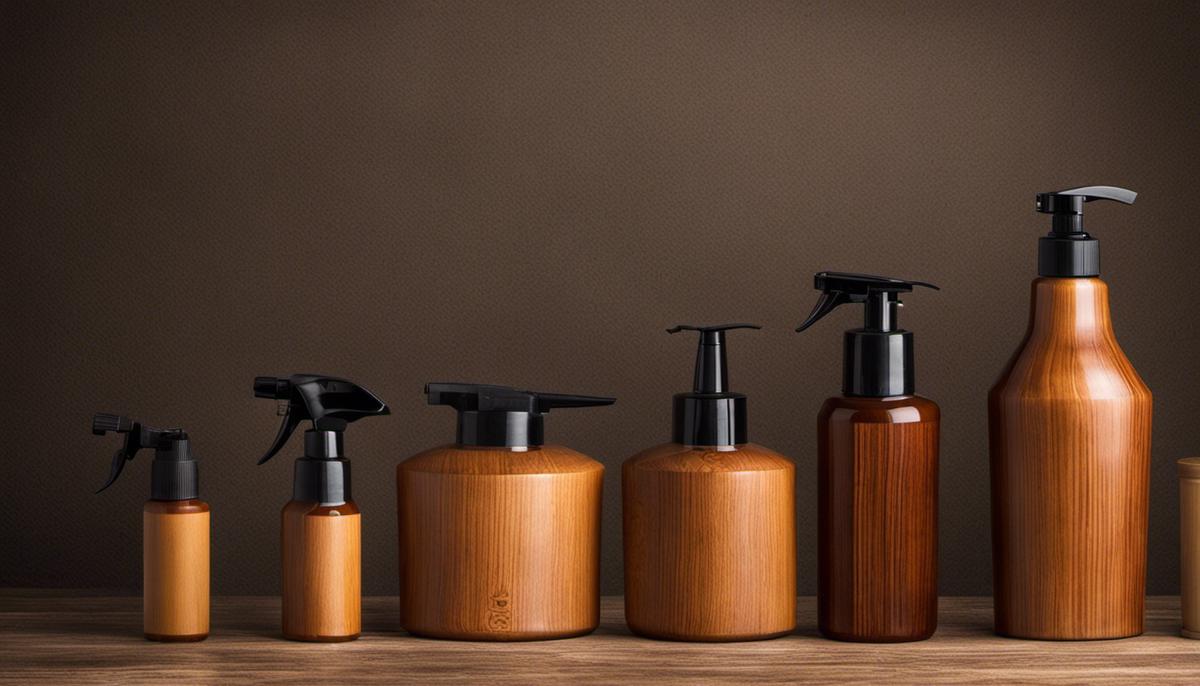
Preparation Techniques
| Technique | Mixing Required | Drying Time | Bond Strength | Ease of Use | Applicator Needed |
|---|---|---|---|---|---|
| Spread and Clamp | No | 1-2 hours | Strong | Easy | Brush or Roller |
| Titebond II/III | No | 30-60 minutes | Very Strong | Easy | Bottle with Nozzle |
| Epoxy Resin | Yes | 12-24 hours | Very Strong | Moderate | Mixing Cup |
| Polyurethane | No | 4-6 hours | Strong | Moderate | Brush or Roller |
| Hide Glue | Yes | 24 hours + | Strong | Moderate | Brush or Spatula |
One of our articles –How To Dissolve Wood Glue?
Know Your Materials
Before you begin, it’s important to know the type of wood glue you are working with. PVA (Polyvinyl Acetate) is a common type of wood glue. It’s white and dries clear.
Additionally, it is water-resistant, so it doesn’t easily come off when wet. Keep this in mind when preparing the surface for painting.
Surface Cleaning
The first thing you want to do is clean the surface. Use a damp cloth to wipe off any dust or dirt from the glued area.
This will provide a smooth surface and prevent any unwanted particles from becoming trapped beneath the paint.
Sanding the Glue
Sanding the glued area is an important step in ensuring the paint applies evenly.
Begin by using medium-grit sandpaper (such as 80 or 100 grit) for the initial sanding.
This will help remove any rough or uneven patches. After the initial sanding, switch to fine-grit sandpaper (such as 180 or 220 grit) to further smooth the surface.
Ensure that you sand in the direction of the wood grain to prevent scratching the surface.
Dust Removal
After sanding down the glued area, use a clean, dry cloth to dust off the surface and remove any remaining wood bits or sandpaper particles.
This step guarantees a smooth and clean surface, perfect for applying an undercoat.
Applying a Primer
Primer application is a crucial step when painting over wood glue. A high-quality adhesive undercoat primer will enhance paint adhesion to the glue and prevent it from peeling over time.
Apply the primer evenly to the glued area using a brush or roller, and allow it to fully dry before proceeding with painting.
Painting the Surface
Once the primer is fully dried, you can begin painting. Start with thin, even coats, applying more as needed for complete coverage.
Using thin coats ensures the paint dries evenly without any drips or runs. Allow each layer of paint to dry completely before applying the next one.
Final Touches
After the paint has fully dried, consider applying a sealant for an extra layer of protection.
This can help maintain the paint job and prevent the painted surface from getting damaged or discolored.
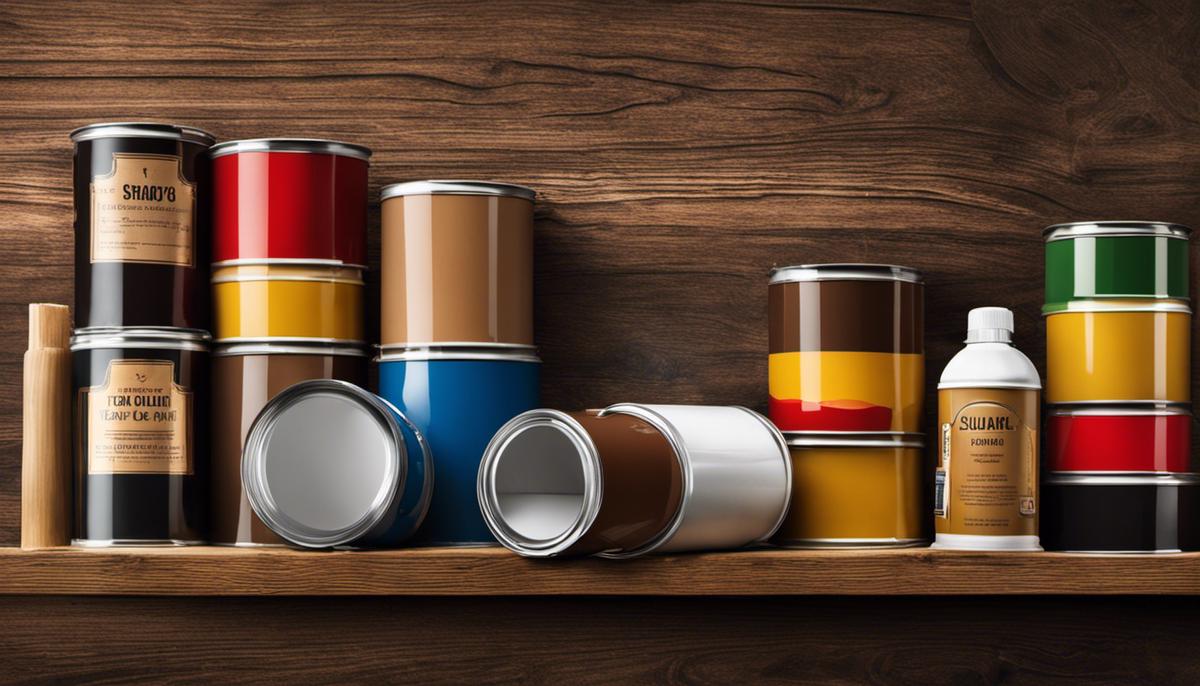
Painting Techniques
| Technique | Description | Pros | Cons |
|---|---|---|---|
| Wet-on-Wet | Applying paint onto wet glue for blending effects | – Seamless color transitions | – Limited control |
| Dry Brushing | Applying a small amount of paint on a dry surface | – Highlights texture | – May require multiple coats |
| Sgraffito | Scratching through dried paint to reveal glue layer | – Adds texture and depth | – Irreversible process |
| Watercolor Wash | Diluting paint with water for a translucent look | – Subtle, ethereal appearance | – Limited opacity |
| Impasto | Applying thick layers of paint for 3D texture | – Creates a tactile surface | – Drying time is longer |
| Marbling | Mixing paint with glue to mimic marble patterns | – Realistic stone appearance | – Requires precise technique |
Preparation Is Key
Before taking on the task of painting over wood glue, it’s essential to be aware that preparation is key. Preparation ensures that the paint adheres well to the surface.
To begin, clean the surface thoroughly to make sure there is no dust or debris. Since wood glue tends to leave a glossy surface, it is necessary to sand the glue to create a rough texture so that the paint adheres properly.
Use a fine-grit sandpaper for this task. Wipe off any resulting dust with a damp cloth and let the area dry before proceeding
Choose the Right Paint
Making a smart choice of paint is significant for achieving a professional finish. Oil-based paint is a common option for painting over glue, as it tends to go on thicker, providing excellent coverage for hard-to-cover areas like glue.
These types of paint are also more durable.
However, latex paint can also be used and is often preferred for its easy cleanup and fast drying time.
Applying a Primer
One of the most effective strategies to ensure uniform coverage when painting over wood glue is to apply a primer beforehand.
A primer essentially provides an additional layer for the paint to adhere to, apart from the actual wood glue.
Ensure that the primer is specifically designed for use with the chosen type of paint.
Apply one to two coats of primer, allowing it to dry thoroughly before proceeding.
This will also help prevent the paint from peeling over time.
Proper Painting Technique
| Technique | Description | Advantages | Disadvantages |
|---|---|---|---|
| Priming | Applying a primer before painting with wood glue | – Enhances adhesion | – Extra step and drying time |
| Sanding | Sanding the glued surface for a smoother finish | – Smooths rough spots | – Dust and potential damage to glue bond |
| Thin Application | Applying a thin layer of wood glue | – Minimizes glue lines | – May require multiple coats |
| Brush vs. Roller | Choosing between a brush or roller for application | – Brush: Precision control – Roller: Speed | – Brush: May leave brush marks – Roller: May require more glue |
| Drying Time | Allowing proper drying time before painting | – Prevents paint from lifting | – Requires patience |
| Sand Between Coats | Sanding between glue and paint coats | – Ensures smooth, even finish | – Adds extra time and effort |
Once the primer is dry, it’s time to apply paint. Always start by stirring the paint thoroughly.
Then, using a good-quality brush or roller, apply a thin, even coat of paint over the wood glue.
Use long, steady strokes to keep the application smooth and avoid globs of paint.
Allow the paint to dry according to the instructions on the can and apply a second coat if needed.
Achieving a Professional Finish
To achieve a polished, professional finish, consider lightly sanding between each coat of paint.
This will smooth out any rough areas and allow the next coat of paint to adhere better.
Additionally, adding a clear topcoat or varnish to the painted surface can finish off the project with a glossy, polished look while providing extra protection for the paint underneath.
This step is particularly useful for surfaces that will endure a lot of wear and tear.
Once again, remember that rushing won’t yield good results. Each coat of primer and paint needs sufficient drying time to adhere properly. Respecting this process is the key to achieving a polished, professional finish when painting over wood glue.
One of our articles –Does Hot Glue Work On Wood?
Related Questions
Does wood glue work on painted wood?
What wood glue is paintable?
Titebond II Premium Wood Glue is paintable.
Can I paint over dried glue?
Yes, you can paint over dried glue as long as the surface is smooth and the glue is fully dry, but it's advisable to use a primer before painting for better adhesion and durability.
What glue can be painted over?
Can you paint on dry glue?
What is the best type of wood glue for woodworking projects?
The best type of wood glue depends on the specific project and the type of wood you're working with. However, PVA (polyvinyl acetate) glue and aliphatic resin glue are commonly used and provide strong bonds for most woodworking applications.
Can I paint over wood glue directly?
While it's possible to paint over wood glue, it's important to ensure that the glue is fully dried and the wood surface is prepared correctly. Using a primer before painting can help improve adhesion and create a smoother finish.
What is the purpose of a primer when painting over wood glue?
A primer is used to seal the wood surface, improve paint adhesion, and create a uniform base for the paint. It helps prevent the paint from soaking into the wood and ensures a more even and durable finish.
How long does wood glue take to dry?
The drying time for wood glue can vary depending on factors such as temperature, humidity, and the type of glue used. In general, it can take anywhere from 30 minutes to several hours for wood glue to fully dry. Be sure to check the manufacturer's instructions for specific drying times.
Can I use a paint roller instead of a paintbrush for painting over wood glue?
Yes, you can use a paint roller for painting over wood glue, especially on larger surfaces. It can help you achieve a more even and efficient application of paint. However, for detailed or intricate areas, a paintbrush may be more suitable.
What should I do if the wood has imperfections or knots before painting over wood glue?
It's a good practice to fill imperfections or knots in the wood with wood filler or putty before applying wood glue. Sand the surface smooth after the filler has dried, and then proceed with priming and painting.
Can I paint over wood glue on outdoor projects or surfaces exposed to moisture?
For outdoor wood projects or surfaces exposed to moisture, it's essential to use waterproof or weather-resistant wood glue. Additionally, consider using exterior-grade paint and coatings to protect the wood from the elements.
How can I ensure a long-lasting bond when using wood glue for woodworking?
To ensure a strong and durable bond, make sure the surfaces to be glued are clean, properly prepared, and fit together tightly. Apply even pressure to the glued joints and clamp them together until the glue dries for the recommended time.
Can I stain wood after using wood glue and painting over it?
Staining wood after using wood glue and painting over it may be challenging because the glue and paint can prevent the stain from penetrating the wood evenly. It's usually best to stain the wood before applying glue and paint.
How can I speed up the drying time of wood glue before painting?
To speed up the drying time of wood glue, you can increase the temperature and reduce humidity in the drying area. However, it's essential to follow the manufacturer's recommendations for drying times and not rush the process to ensure a strong bond.
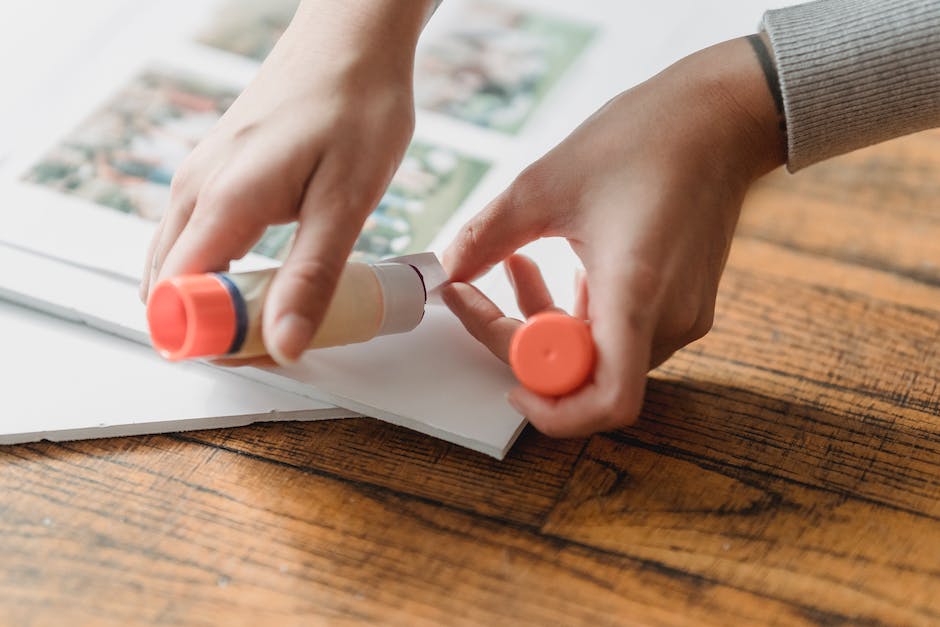
The journey of becoming proficient at painting over wood-glue surfaces is an intricate process that extends beyond simply picking up a brush and palette.
It involves gaining a deep understanding of the relationship between wood glue and paint, mastering pre-painting surface preparation techniques, and acquiring effective painting skills to achieve a professional finish.
Incorporating these techniques and methods will elevate your craftsmanship and enable you to transform wood-glued surfaces into beautiful painted artwork.
While the learning curve may appear steep, with patience, practice, and persistence, you are likely to achieve impressive results. After all, every expert was once a beginner

